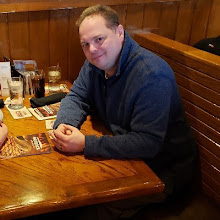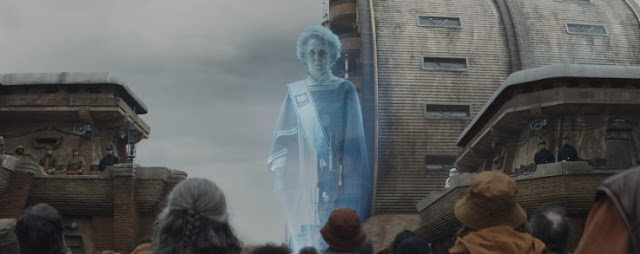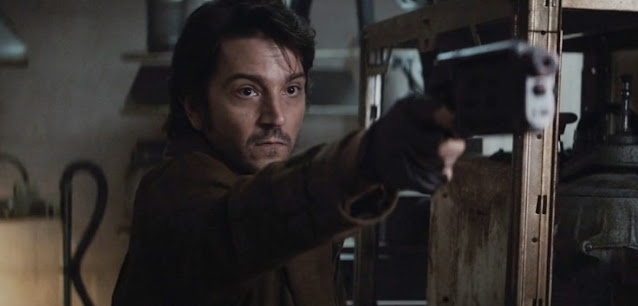I caught a few minutes of the USA vs. Wales World Cup match the other day (hi Rob!) and the perfect analogy occurred to me.
As an American who has never played soccer, I apologize to all our friends in the United Kingdom and elsewhere for this. This is a broad-brush analogy.
World Cup Soccer is Star Wars: Andor.
In Andor, as in soccer, you have long stretches of time where very little happens. A lot of talking and standing. But when stuff does happen, man, it gets INTENSE. And the acting is top-notch across the board.
With all that said, I found Andor to be quite underwhelming, particularly when compared with the general fan reaction to the show. With very few exceptions, many within this famously divided fandom are almost united in showering praise upon Andor, pointing out its writing, acting, music, settings and characters as highlights.
I would agree that the quality of the overall production was high level. Technically, it’s difficult to point out any flaws in what showrunner Tony Gilroy produced. It was dystopian science fiction at its finest.
It just didn’t land with me as Star Wars.
The question “What is Star Wars?” can elicit any number of responses. I defer to the saga’s creator, George Lucas. In JW Rinzler’s definitive book “The Making of Star Wars” (2007), Lucas says “The thing I like about this film is the fact that it was written and designed as a movie. The elements that are interesting in it are cinematic elements, not literary elements. It was designed as an emotional, visceral exercise, not as an intellectual exercise.”
In the creation of his six feature films, as well as The Clone Wars (2008-14, 2020), Lucas was driven by colors, shadow, music, frame-by-frame composition and the power of editing as the means through which his story was told. Star Wars is also meant to be hopeful, uplifting and optimistic.
In my opinion, Andor lacked several of Star Wars’ basic and essential elements. There was virtually no humor to be found anywhere in its 12 episodes. Even Rogue One, considered perhaps the most humorless Star Wars project to date, had its moments of subtle humor and smile-inducing sequences, mainly centered on K-2SO, the reprogrammed Imperial droid, who is rumored to show up in Season 2.
It’s a story that contains no element of thrilling escapism. It leans hard in the opposite direction, acting as a reminder of the brutality and evil oppressive regimes are capable of producing. This was a story of everyday folk in a dirty, poor place far away from the center of the galaxy’s events struggling to find out who they are within that oppressive regime.
I couldn’t shake the feeling that Gilroy was reluctant and/or resentful he had to tell this story within the Star Wars universe, since there were so few visual representations of Star Wars. You’d spot a TIE Fighter, randomly flying around Aldhani during an arc. And we did get one very fast space duel with TIE Fighters in Episode 11. The most common representatives of the Empire were black and gray-clad Imperial officers, who showed up in a number of locations throughout the show. Stormtroopers, barely visible in the first 11 episodes, didn’t fire a blaster until the 12th and final episode of the season.
The overall story of Andor was broken up into mini-arcs. Luthen Rael (played brilliantly by Stellan Skarsgard) recruits Cassian Andor for a mission; Cassian successfully completes that mission on Aldhani, securing 80 million credits for the Rebellion; But then, while walking on some beach somewhere, Cassian is detained by a Shoretrooper under dubious charges and sentenced to six years in prison on Narkina 5; Cassian then leads a prison riot, escaping from the prison; Only to find out his mother has passed away, bringing him back to his home planet of Ferrix, where he leaves on a ship with Luthen, bound for the Rebellion.
The season is full of unresolved endings and narrative red herrings. In the opening sequence of Episode 1, Cassian is searching for his sister, which certainly seems like adequate motivation for his character. But that is quickly dropped and forgotten, never to be brought up again, save one line of dialogue.
The mission to Aldhani that nets the Rebellion 80 million credits is another problematic aspect of the series. Mothma is concerned with how to keep secretly funding the Rebellion, which necessitates the Aldhani mission. Makes sense. However, after the successful completion of that mission, Mothma apparently remains under a lot of pressure to secure even more funding, to the point where she faces having to surrender her teenage daughter to potential betrothal, in accordance with Chandrila tradition.
So, was the Aldhani mission pointless then? Why bother doing the mission when it didn’t do anything to relieve the financial pressure Mothma and the Rebellion were under? That point could have easily been explained with a couple of efficient lines of dialogue, but it never was.
Maybe the most action-packed episode of the season was “One Way Out,” the escape from the prison on Narkina 5. But that arc was deeply flawed too, as I saw it.
There was a post-credits scene in Episode 12, which showed the parts Cassian and the prisoners were making on Narkina 5 were elements of the Death Star’s dish firing weapons system. A much-needed story thread neatly tied up, which makes that scene an exception to the rules the series has laid out.
Wednesday’s finale featured a funeral procession for Maarva, Cassian’s mother. In it, his droid B2-EMO transmits a hologram message from Maarva, telling the people of Ferrix they need not live under the thumb of Imperial oppression, that they should rise up and fight the Empire. Which of course, they do to the tune of a street riot between Ferrix townsfolk and a garrison of Imperial officers and - shocker - a handful of Stormtroopers and Death Troopers. How does that confrontation get resolved? Who ultimately comes out on top during that insurrection battle? We don’t know and it is left quite purposefully unclear.
Luthen travels to Ferrix, to the funeral, because (I guess) he believes Cassian will be there and intends to kill him. Why, we have no idea. Since Cassian proved he is an effective fighter during the Aldhani mission, he’s clearly a potential asset to the Rebellion. So why would Luthen want to kill him? A loose end left untied? That also isn’t made clear. Then at the end, Cassian sneaks aboard Luthen’s ship and says “Kill me.” What is Cassian’s reason for wanting to die, after he’s rescued some of his people from Ferrix (the broken-down Bix chief among them). That isn’t made clear. Nor is it made clear why Luthen decides that gee, maybe he shouldn’t kill Cassian afterall, and he is (presumably) taking him fully into the Rebellion. Which is what the audience was led to believe at the end of Episode 2, when Cassian also boarded Luthen’s ship at the conclusion of that episode.
It is a strange place I find myself in, feeling so critical of a Star Wars story told in live action. As a fan of this franchise since I was 4 years old in 1977, I have welcomed nearly every new element to the franchise with open arms and unconditional love (until the sequel trilogy films). Until now, the offerings on Disney Plus have been mind-blowing to me, with Obi-Wan Kenobi being the easy highlight of it all. But I was left unmoved emotionally by the events and characters of Andor, at the end of the day. Was it well-made? No question. All credit should go to everyone involved with the production for making a show that ought to merit award consideration in many categories. But as a Star Wars project, it just felt like a 40-yard kick at the goal that looked gorgeous until it sailed 10 meters over the goalkeeper’s head.








Not to be an asshat, but that you liked OBI-WAN and can't get into ANDOR does speak volumes. OBI-WAN was a joyless mess second only to THE RISE OF SKYWALKER. ANDOR ask the question "what makes a rebel?" and gives answers adults can relate to. Those answers aren't explicit. ANDOR isn't aimed at the seven year old in me who saw Star Wars (1977) in its original theatrical run. Nothing wrong with that – because THE EMPIRE STRIKES BACK asked harder questions too.
ReplyDelete